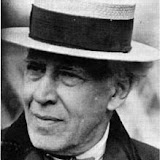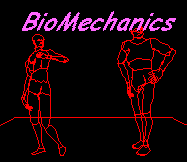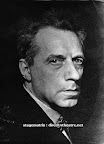books.vtheatre.net
classes.vtheatre.net
directing.filmplus.org
shows.vtheatre.net
filmplus.org/plays
rat.vtheatre.net
film.vtheatre.net
spectator.vtheatre.net
filmplus.org/students
 |
| ACTING |
...
 2009 LUL
2009 LUL
| "Acting is not being emotional, but being able to express emotion." - Kate Reid

 Fundamentals : BioMethod  Acting Pre-Acting is the term introduced by Meyerhold. Somewhere on my theatre webpages there is a description of this initial ACT on stage, usually linked with the entrances. If you remember about SPECTATOR in your self-analysis, you can see the need for Pre-Acting. For serious actors, I recommed to read Directing Pages; director is nothing more than a representative of the public. There are pages on Acting for Directors' eyes only. Read Acting file first (and "BioMethod" pages)!
 Summary
One Act Fest 
Notes 2004 & After ...
|
 & thr blog
& thr blog
I see, you didn't take my advise and you are reading the book! don't you understand how dangerous it is? If my life experience didn't turn turn you away, why don't you read about Meyerhold himself and the biomechanics did to him? He was shot in 1937 by the secret police! Is this what you want for yourself? Is this how you want to end your life? Are you suicidal?...
I introduce Pre-Acting, when we get to the first monologue cycle in class. You know how usually it goes -- a student positions himself and goes for the text!Critics might argue that this is a perfectly normal instance of the spoken text being enhanced by mimetic embellishments. But note that we intentionally emphasized the last words of the quotation to stress the point at issue.Stop! Stop!
This is a violation of all acting laws!
According to Pre-Acting, you can go for the text, because you haven't establish your character yet! Yes, yes, the 5Ws have to be done BEFORE you speak your lines and only then THROUGH your lines!
You have to be "in front" of the writer's text with YOUR ACTOR's TEXT, not BEHIND. If you use the lines to deliver the meaning, you are a messenger, not ACTOR.
You must set "your" acting situation, "your" interpretation of the character for the public to SEE, before they hear you. Acting Of Course! It has to be done physical: that is why both terms -- physicalization and visualization -- better be introduced right away.
How do you do it? How about "master-gesture"? Did you develop the walk for your character? What about "character's history"? Age, background, etc. You can and you should bring it first -- and only after this VISUAL introduction you can use the written text -- playing it within the established ACTING environment, YOUR SPACE & TIME!
Take it again, "To Be or Not To Be" -- before you can get to this line, I need to see Hamlet's state of mind, I have to WAIT for the first line. Did you notice how often the dagger-prop is used to visualize the thought? Yes, the youngster thinks about his suicide! Can I see it? I want to! The silent struggle with his thoughts, the inner drama, the seriousness... and only then I understand why does he speak!
Actually, I coined another term "PostActing" -- for exits. I ask actors not to leave with reacting to their monologues. Remember, the basic ACTING CYCLE? You can't leave me with the lines! You must leave me with the picture I can remember after you left!
"After-Acting"?
PS
Where is this page on "preacting" from Meyerhold (left)? Could be on Stagematrix pages. Actors, think for a moment about what I do when I direct -- I prepare your every entrance! I and playwright do this preacting for you! Work with us, please! We even change the light cues! Use it! React to it! Where is the scene before yours? In the audience -- their minds, hearts, their imagination! Interact with it, with them! If you don't, it's bad acting... (Oh, how I want to write about bad acting! I saw so much of it, so much could be learn from it!)
Read all pages on Spectator and Spectacle!
Do you have questions? You should. I do.
Pre-Acting for all and each character: exits and entrances. What about the scenes? When actors establish the chronotope through Re-Acting (set, light, time, and etc.)
Homework
Write your journal! Compare Pre-Acting in Method and BM. Find a few pre-acting choices for your character in 12th Night.Pre-acting examples from the movies.
NB
"The actor's work consists in the artful juxtaposing of acting and pre-acting." M.[ In the Russian theatre, the famous actor Lensky (1874-1908) was a master in the art of pre-acting. In the part of Benedict (in Shakespeare "Much Ado About Nothing") he gave a classic demonstration of pre-acting, which was describe as follows in Russkie Vedomosty, 1908, no. 241 ]:
`Benedict emerges from his hiding-place behind a bush, where he has just overheard the conversation about his love for Beatrice which had been contrived especially for his ears. For a long time he stands staring at the audience, his face frozen in amazement. Then suddenly his lips move very slightly. Now watch his eyes closely: they are still fixed in concentration, but from beneath the brows imperceptibly, gradually, there begins to creep a triumphant happy smile; the actor doesn't say a word, but you can see that a great irrepressible wave of joy is welling up inside Benedict; his face muscles, his cheeks begin to laugh and a smile spreads uncontrollably over his quivering face; suddenly a thought penetrates his uncomprehending joy and in a final mimetic chord the eyes which until now have been frozen with astonishment light up with delight. Now Benedict's whole body is one whole transport of wild rapture and the auditorium thunders with applause, although the actor has yet to say a single word and only now begins his speech.'
Pre-acting prepares the spectator's perception in such a way that he comprehends the scenic situation fully resolved in advance and so has no need to make any effort to grasp the underlying message of the scene. This was a favorite device in the old Japanese and Chinese theatres. Nowadays, when the theatre is once more being employed as a platform for agitation, an acting system in which special stress is laid on pre-acting is indispensable to the actor-tribune."[4]
Forget "the actor-tribune." (Meyerhold, Brecht) But the essense of the PRE-acting is great!
Listen, there are no "wrong" or "right" methods and techniques; the only wrong thing is to do nothing.
Listen, kid, go comedy! Comedy acting is extreme and the extremes. Start with your "comedy monologue" assignment. [ See preacting and interacting in BioMethod Directory ]
Updated: Theatre w/Anatoly: over 3000 pages! Textbook:
Fall 2003 -- Spring 2004: 5 Approaches to Acting, David Kaplan
Part I. Task (Method)
Chapter 1. Stanislavsky
Chapter 2. Obstacles
Chapter 3. Stanislavsky's Legacy
Part II. Episodes
Chapter 4. Brecht
Chapter 5. Combining Episodes
Chapter 6. Meyerhold
Part III. Images
Chapter 7. Masks
Chapter 8. The Language of Mask
Part IV. The World of the Play
Chapter 9. Comparison
Chapter 10. Rules
Part V. Telling a Story
Chapter 11. Storytelling
Chapter 12. Dramatic Action
Chapter 13. Shakespeare
Part VI. Comparing Approaches
Chapter 14. Comparing
Chapter 15. Choosing an Approach
Chapter 16. Combining Approaches

projects: BM software texts: webpages: new BM directory for Spring 2004!  Chekhov, Ibsen, Shakespeare Chekhov, Ibsen, Shakespeare
Actingland.com - Acting resources, career guides, and casting information. 
|










An online course supplement *
2005-2006 Theatre UAF Season: Four Farces + One Funeral & Godot'06
Film-North * Anatoly Antohin * eCitations *
Acting amazon
